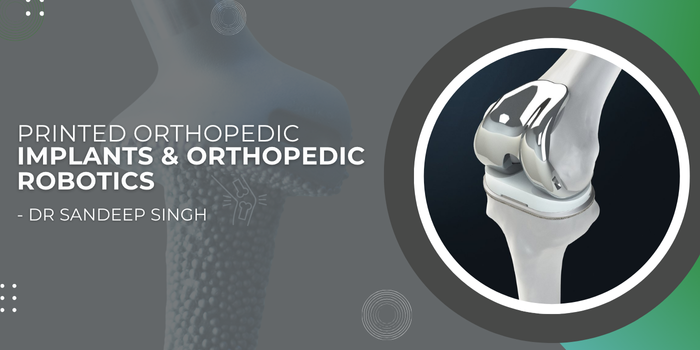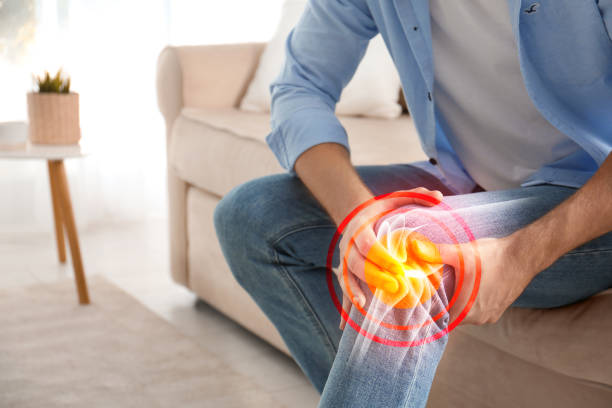
A knee injury or advanced joint damage does more than cause discomfort—it can slowly take away the freedom to move with ease. Simple tasks like climbing stairs, standing up from a chair, or even taking a short walk may become challenging, leading to frustration and loss of independence.
Globally, osteoarthritis affects over 528 million people, and in India alone, nearly 22–39% of adults above 50 years face knee-related problems. With these rising numbers, the demand for advanced orthopedic solutions is higher than ever.
Dr. Sandeep Singh, a distinguished Orthopedic Surgeon in Bhubaneswar, says:
“The combination of technology and medicine has opened doors for treatments that were once unimaginable. With 3D-printed orthopedic implants and robotics, surgeries are becoming more precise, recovery is faster, and patients are regaining mobility with renewed confidence.”
Let’s dive deeper into how these advanced technologies work…
What are 3D-Printed Orthopedic Implants?
Imagine having a joint implant designed just for you—matching your body’s unique structure. That’s the promise of 3D-printed orthopedic implants. Unlike traditional implants, which are manufactured in standard sizes, 3D-printed ones are tailor-made using advanced imaging and printing techniques.
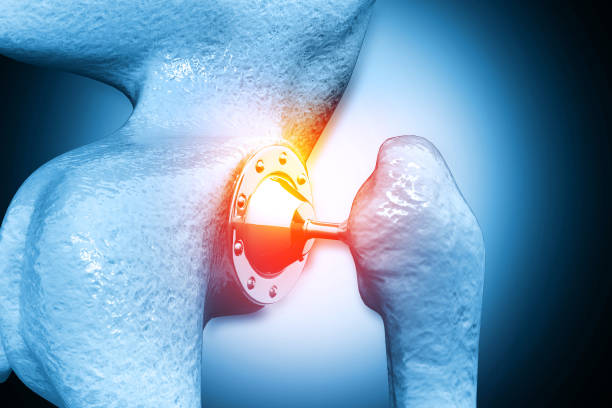
Here’s how they’re created:
Digital Imaging – Scans such as CT or MRI provide detailed 3D maps of the patient’s bone structure.
Personalized Design – The implant is digitally modeled to match exact anatomy.
3D Printing – Specialized printers build the implant layer by layer using durable medical-grade materials like titanium.
These implants not only fit better but also promote quicker bone integration, reducing complications.
But technology doesn’t stop here—there’s more to explore.
What is Orthopedic Robotics?
Picture a surgeon having an assistant that never tires, calculates with extreme precision, and ensures every movement is steady. That’s what orthopedic robotics brings to surgery.
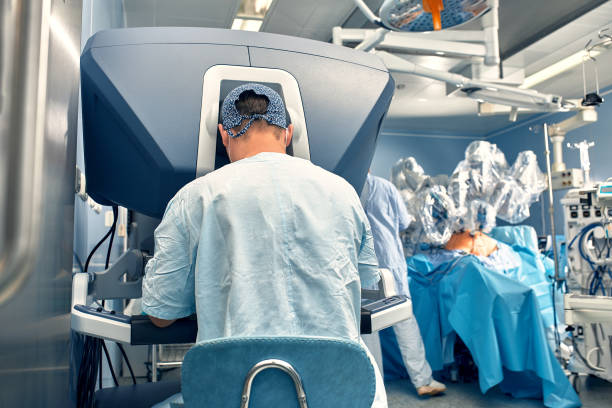
Robotic systems guide surgeons during complex procedures like knee and hip replacements. With real-time imaging, robotic arms help in positioning implants accurately, reducing human error. This means:
- Smaller incisions
- Less blood loss
- Better alignment of implants
- Quicker rehabilitation
Dr. Sandeep Singh, a renowned Orthopedic Specialist in Bhubaneswar, explains:
“Orthopedic robotics does not replace the surgeon—it enhances their ability. The surgeon remains in control, but with robotic assistance, every step becomes more exact, leading to outcomes that benefit patients in the long run.”
Still feeling uncertain about surgery and recovery outcomes? Speak with an orthopedic expert to gain clarity and confidence in making the right decision for your health.
Why do patients prefer these modern approaches? Let’s uncover the benefits.
What’s the Benefits of 3D-Printed Implants & Robotics?
The marriage of 3D-printing and robotics is reshaping orthopedic care. Here are the major benefits explained simply:
Personalized Fit
Every joint is different. With 3D printing, implants are custom-made, reducing discomfort and improving movement.
Improved Precision
Robotics ensures implants are placed at the right angle and depth, enhancing the longevity of the surgery.
Faster Recovery
Smaller cuts, less tissue damage, and accurate procedures mean patients experience quicker recovery after robotic joint replacement.
Better Durability
Custom implants distribute weight naturally, improving the durability of 3D-printed implants compared to generic ones.
Enhanced Quality of Life
Patients often report reduced pain, better mobility, and improved confidence after surgery.
Still curious about when these cutting-edge techniques are applied? Let’s find out.
When are These Technologies Used in Orthopedics?
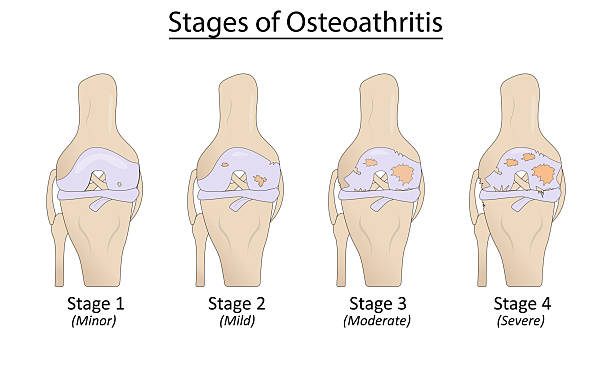
These advanced methods are not for every single case but are ideal in specific situations. They’re most often recommended when:
Severe Joint Damage – From arthritis or injuries requiring complex reconstructions.
Revision Surgeries – For patients whose earlier implants have failed.
Deformities – Cases where traditional implants won’t align well with bone structure.
Active Lifestyle Needs – Younger patients needing durable and high-functioning implants.
Dr. Sandeep Singh, an accomplished Joint Replacement Surgeon in Bhubaneswar, shares:
“Selecting patients for 3D-printed implants and robotics requires careful evaluation. The technology works best when used for cases where traditional methods cannot deliver long-term results. This is why every patient must undergo a detailed assessment before deciding the surgical plan.”
But while the advantages are clear, challenges also exist. Let’s address them.
Challenges & Considerations
Despite their promise, 3D-printed implants and robotics come with certain limitations:
High Costs – Advanced technology often increases treatment expenses.
Availability – Not all hospitals are equipped with robotic systems.
Training Needs – Surgeons must undergo specialized training for accurate use.
Long-Term Data – While early results are excellent, more studies are needed to track outcomes over decades.
These challenges highlight the importance of consulting a qualified orthopedic surgeon before deciding on treatment.
So, where does this leave patients considering surgery?
Conclusion
Orthopedic care is witnessing a revolution with 3D-printed orthopedic implants and orthopedic robotics. These innovations are making surgeries safer, recovery faster, and results more long-lasting. For patients, this means renewed mobility and improved quality of life.
Thinking about how advanced treatments can help restore your mobility? Consult an orthopedic specialist to discuss personalized options and find the right solution for your condition.
But even with all this information, doubts often linger in patients’ minds. You may be asking yourself some very practical questions right now…
Frequently Asked Questions
How long does it take to recover after robotic orthopedic surgery?
Recovery is generally faster compared to traditional methods. Many patients start walking with support within a few days, and full recovery may take 6–12 weeks, depending on overall health and physiotherapy participation.
Are 3D-printed orthopedic implants safe and long-lasting?
Yes. They are made of biocompatible materials and designed for personalized fit, which enhances durability of 3D-printed implants. With proper care, they can last for decades.
Will I need physiotherapy after robotic joint replacement?
Absolutely! Physiotherapy is crucial for regaining strength, flexibility, and balance. Care after robotic joint replacement involves structured exercises tailored to individual needs.
Can I walk normally after getting a 3D-printed implant?
Yes, walking after knee replacement with a 3D-printed implant often feels more natural due to the custom fit. Most patients return to daily walking within weeks.
What lifestyle changes are needed after robotic orthopedic surgery?
Lifestyle after orthopedic surgery may include maintaining a healthy weight, avoiding high-impact activities, staying active with low-impact exercises, and following regular medical check-ups to protect joint health.
References:
https://www.mayoclinic.org/departments-centers/robotic-orthopedic-surgery/overview/ovc-20472153
Disclaimer: The information shared in this content is for educational purposes only and not for promotional use.

